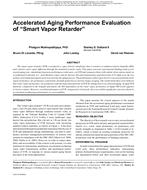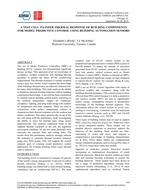The thermal performance of many new homes has been improving steadily over the past few years. Construction to meet the requirements of the Model Energy Code, ASHRAE Standard 90.2, the Home Energy Rating System, or the Energy Star What has not changed significantly in most new energy efficient homes is the base load component–the energy used for lighting, appliances, and domestic hot water (DHW). With such large reductions in heating and cooling loads, the base load, having changed little, now emerges as a major component of the total house load. Effective technologies exist for reducing base load: (1) fluorescent lighting, (2) Energy Star™ appliances, and (3) high efficiency water heaters. Because base load energy use is so dependent on the characteristics of house occupancy, it is a challenge to develop a reasonable description of this load for comparative analysis purposes. This study is an attempt to develop such a characterization and to analyze the reduction in total annual house energy use/cost possible through the use of advanced base load technologies.
Visual DOE 2.6, a PC-based simulation program, was used to perform the analysis. The houses defined for analysis are representative of typical builder production homes. Three variants were analyzed that are believed to represent a large proportion of the variability in house base load:
- Climatic region: cold, mixed/cold, hot, mild.
- Occupancy types: working couple, one income with two children, retired couple.
- House size: small (1450 ft 2 , 134 m 2 ), medium (2660 ft 2 , 247 m 2 ), large (4610 ft 2 , 386 m 2 ).
For comparative purposes, houses and base load pack-ages were analyzed at two representative performance levels: (a) current practice–compliance with the MEC 95 house shell and heating, cooling, ventilation, and indoor air quality (HCVI) and compliance with the 1993 National Appliance Energy Conservation Act and (b) compliance with the Building America performance level (house shell and HCVI) and compliance with Energy Star™ requirements (appliances and lights). The analysis supports a number of conclusions:
- Applying the full range of improvements to the house shell, HCVI system, and base load components cuts both energy use and energy cost in half across all climates.
- In all climates the Building America shell improvements are recommended. They benefit heating and cooling in both energy use and cost.
- HCVI equipment efficiency improvements are climate specific: heating improvements in cold and mixed climates and cooling improvements in hot climates.
- Lighting improvements are most beneficial in hot climates where their cooling load reduction adds to the lighting energy reduction. They reduce energy costs in all climates. Lighting efficiency should start with fixtures that are used for long periods of time, e.g., kitchen, family room, corridors, etc.
- In all climates, appliances should be chosen for impact on annual energy use (particularly, efficient refrigerators, freezers, and continuously running ventilation fans) and for water use reduction (efficient shower heads and clothes washers). Choose all appliances for low stand-by power requirements.
- For DHW energy, water use reduction through the appropriate selection of appliances is as important, or more, than improvements in DHW heater efficiency. DHW heater efficiency improvements are mainly beneficial in cold climates.
Citation: ASHRAE Transactions, vol. 108, pt. 1, Atlantic City, 2002
Product Details
- Published:
- 2002
- Number of Pages:
- 11
- File Size:
- 1 file , 310 KB
- Product Code(s):
- D-6960


